Ficus Elastica (Rubber Tree) is one of the most popular houseplants, favored for its resilience, large glossy leaves, and air-purifying […]
Aglaonema Plant
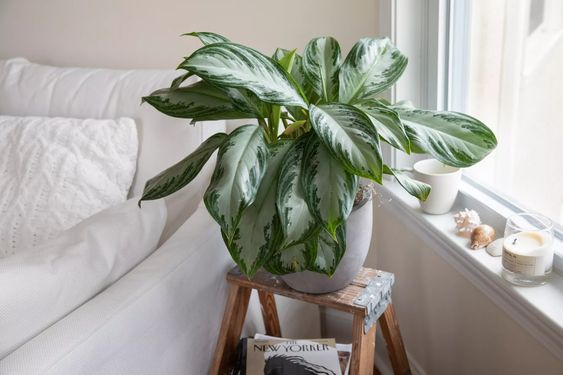
|The Aglaonema is one of the plants that occupy the top positions in the list of the most favorite indoor plants in the world! With their unique and lush foliage, easy care, and ability to adapt to almost any home or office, it's hard to find a more versatile and stunning houseplant.
Aglaonema color variations range from dark green to silver, and sometimes have hints of red and pink. This variety of shades adds vibrancy to your interior, bringing style to any space. Apart from their striking appearance, aglaonemas grow relatively slowly and are great houseplants as they don't like full sun, therefore making them the perfect foliage plants for any home.
In this publication, you will find comprehensive advice on their care origin and types. 😉
Origin
Also called "Chinese Evergreen," this plant is native to the tropical forests of Asia, so it will especially appreciate a spot where it can receive indirect sunlight. The name Aglaonema derives from the Greek and combines "agláos" /shining/ and "néma"/thread/. This refers to the flowers’ shiny stamens. The Aglaonema belongs to the genus of evergreen grasses and dwarfs of the Araceae family. They are typical greens in the tropical and subtropical regions of Asia and New Guinea. Plants of this genus are found in moist and shady tropical forests. Aglaonema is a close relative of Dieffenbachia, but with significantly smaller sizes, sharper leaves, and long flowering under the right conditions, which often form fruits that are NOT edible. The leaves secrete poisonous juices, so when you care for the plant or have pets, be careful!
Aglaonema Species
Green plants are lovely, but sometimes we crave brighter colors and bold patterns. Aglanemata offers both! This compact and easy-to-grow houseplant is loved for its vibrant colors and patterns, ranging from green, pink, red, silver, and yellow to stripes, spots, and gradients. So if your space needs a little color, Aglaonema is the plant for you. There are more than 100 varieties of Aglaonema. Varieties such as 'Red Peacock Aglaonema', 'George's Ruby Aglaonema', 'Harlequin Aglaonema', and 'Anyanmanee Aglaonema' have rich red-pink spots.
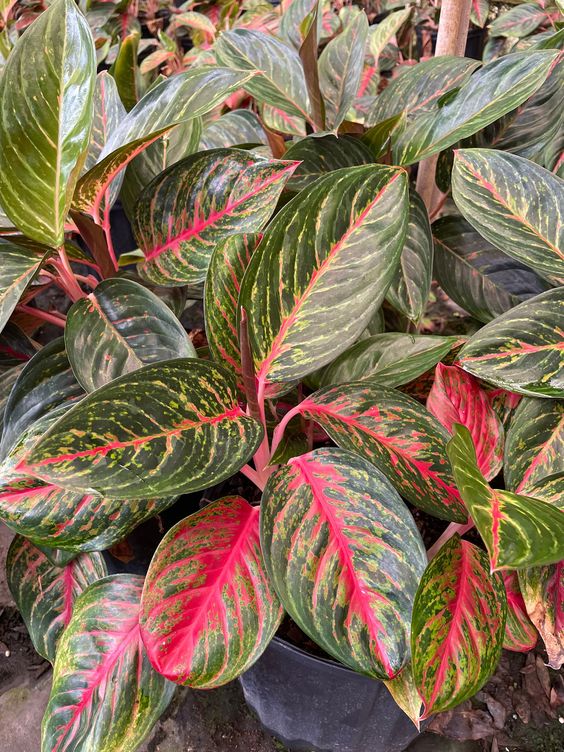
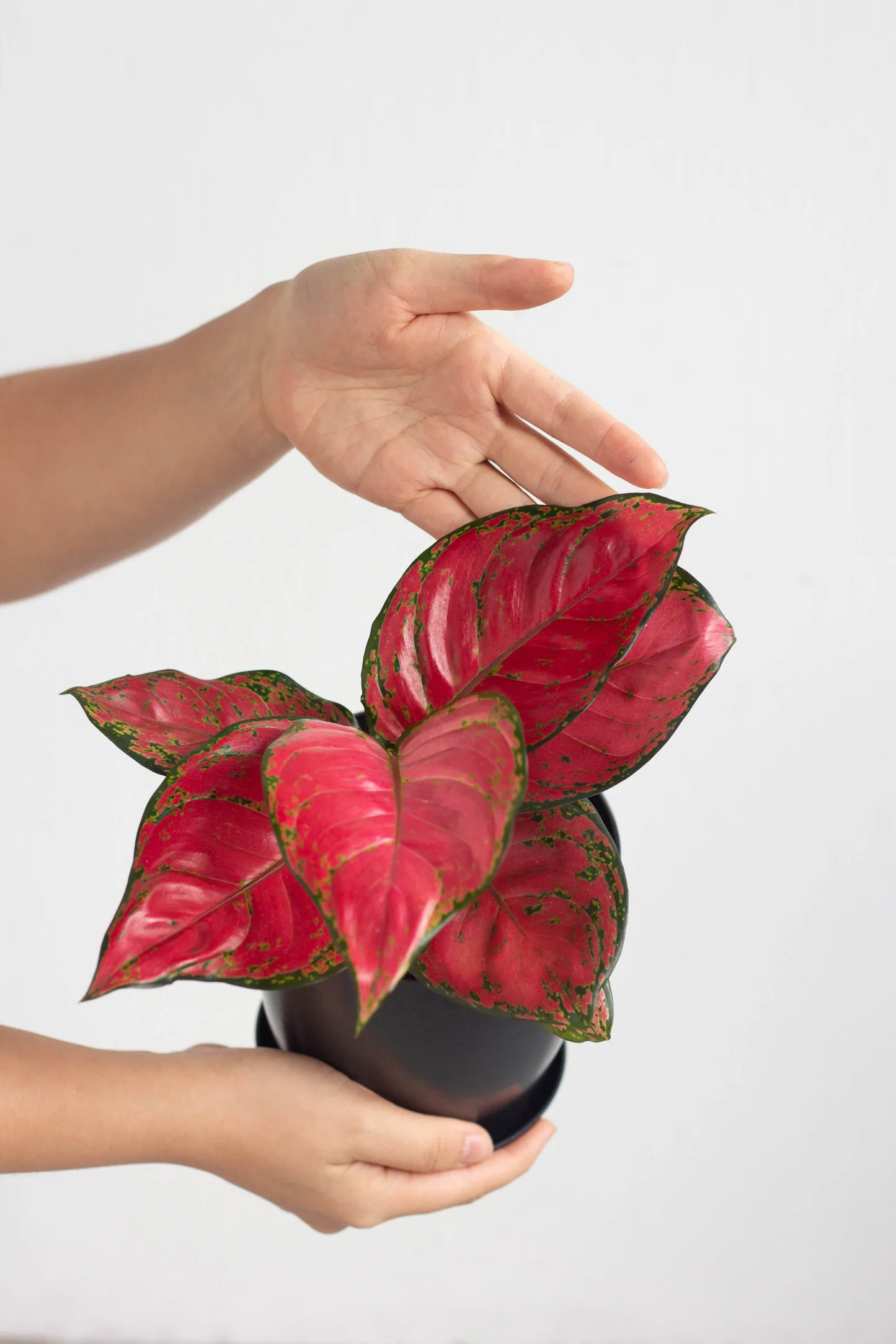
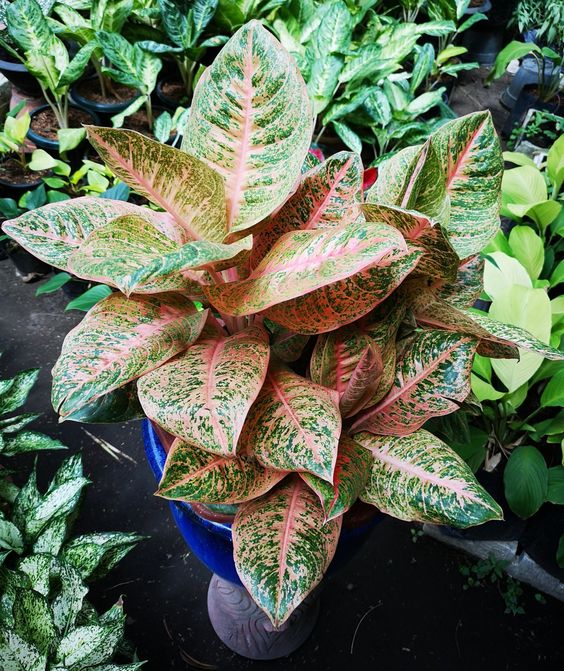
Green aglaonema offers a lush, jungle-like feel, along with more muted but no less attractive colors and patterns. 'Black Lance Aglaonema' is a larger variety that features long, pointed leaves with pale silver and deep green hues, while the pale green and white stripes of 'Aglaonema Modestum', 'Aglaonema Silver Bay, and 'Aglaonema Kiwi' are reminiscent of the coloring of some species of Calathea.
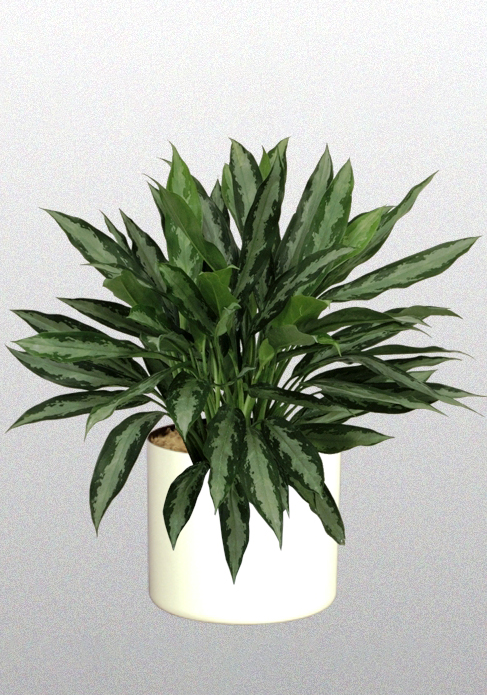
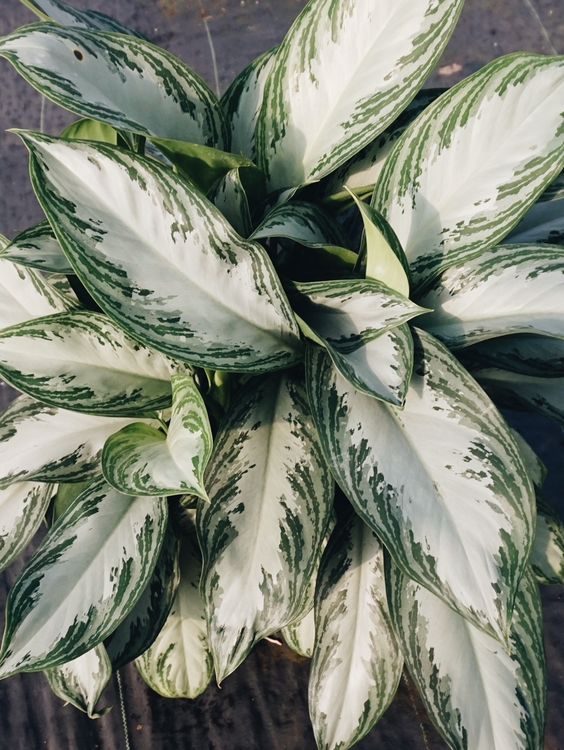
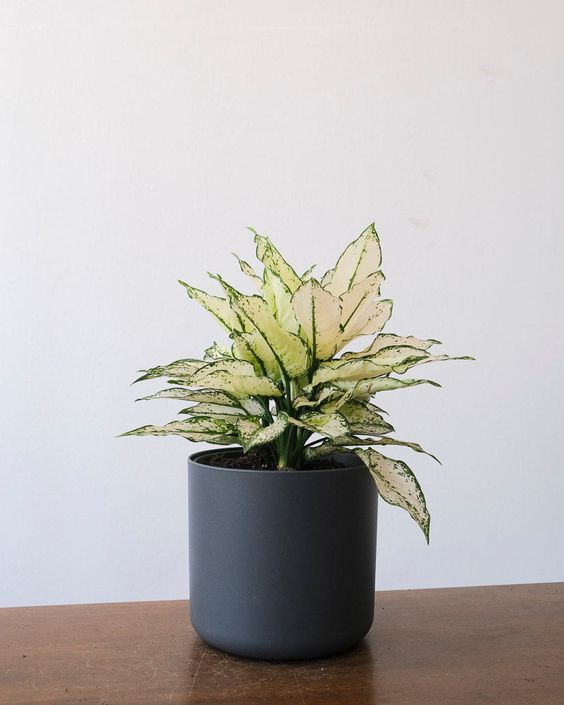
Plant Care
Botanical Name: Aglaonema commutatum Common Name: Aglaonema, Chinese evergreen Plant Type: Evergreen perennial Mature Size: 50cm. high Sun Exposure: Low to bright, indirect light Soil Type: Peat-based potting soil Soil pH: 5.6–6.5 Toxicity: Toxic to people; toxic to pets1
Light
Many of the houseplants need as much light as you can give them, but Aglaonema plants are quite flexible in this regard. In particular, the green varieties of aglaonema can tolerate lower light conditions well. However, for colorful variegated species, bright light without shadows is perfect for them. A north-facing window, which offers the least amount of light compared to windows with other exposures, would be suitable in such a case.
Watering
Винаги поливайте обилно своята Аглаонема. Уверете се, че сте навлажнили цялата почва, така че поливайте с лейката около корените на растението докато водата излезе през дренажните отвори. * Дренажните отвори са задължителни и винаги се оглеждайте саксиите да имат такива!
Поддържайте почвата влажна - но не и мокра! Трябва да оставите горните 3-4см от почвата на растението да изсъхне, преди да помислите отново за поливане. Като цяло аглаонемата ще се нуждае от по-често поливане през пролетта и лятото и по-рядко през зимата, така че проверявайте редовно влажността на почвата. Обърнете внимание, че това растение не обича да изсъхва напълно, но пък не обича и да стои мокро през цялото време, така че ще трябва да намерите златната среда.
Вашето растение ще Ви подскаже, когато стане прекалено сухо, като остави листата му да увиснат. Те трябва да се възстановят малко след поливането. Ако листата на вашето растение пожълтяват или стъблата му са кашави, това е знак, че растението получава твърде много вода.
Soil
Plant your Aglaonema in standard foliage potting soil. Fertilize the plant with a houseplant fertilizer diluted in half every four months. When your plant's pot is overflowing, repot it into a pot one size larger with fresh soil. This is best done in spring or summer when the plant is actively growing.
Temperature
We always say that if the temperature is comfortable for you, your plant pleased will be also, so normal room temperatures are fine when growing Aglaonema. However, do not forget that this plant loves the heat! Make sure you place it in a warm place. If you live in a climate with cold winters and have rooms that are particularly cool in the winter, it would be a good idea to move your plant to a warmer room. Also, avoid areas in your home or office that have heating or cooling vents, and keep the plant away from drafty windows and doors.
Humidity
In its natural habitat, the Aglaonema is born in very warm and humid areas. High indoor humidity would benefit these plants, but they are also very tolerant of average indoor humidity.
There are various ways to increase the humidity of indoor plants and it is good if possible to maintain humidity levels between 40-60%. It's important with humidifiers to make sure the air is circulating properly! /Especially if you have a lot of plants in your room/ as this will help prevent fungal problems.
You have more questions?
Contact our Top-Flowers team of professionals and ask everything you want about indoor plants. We will gladly answer all your questions!
